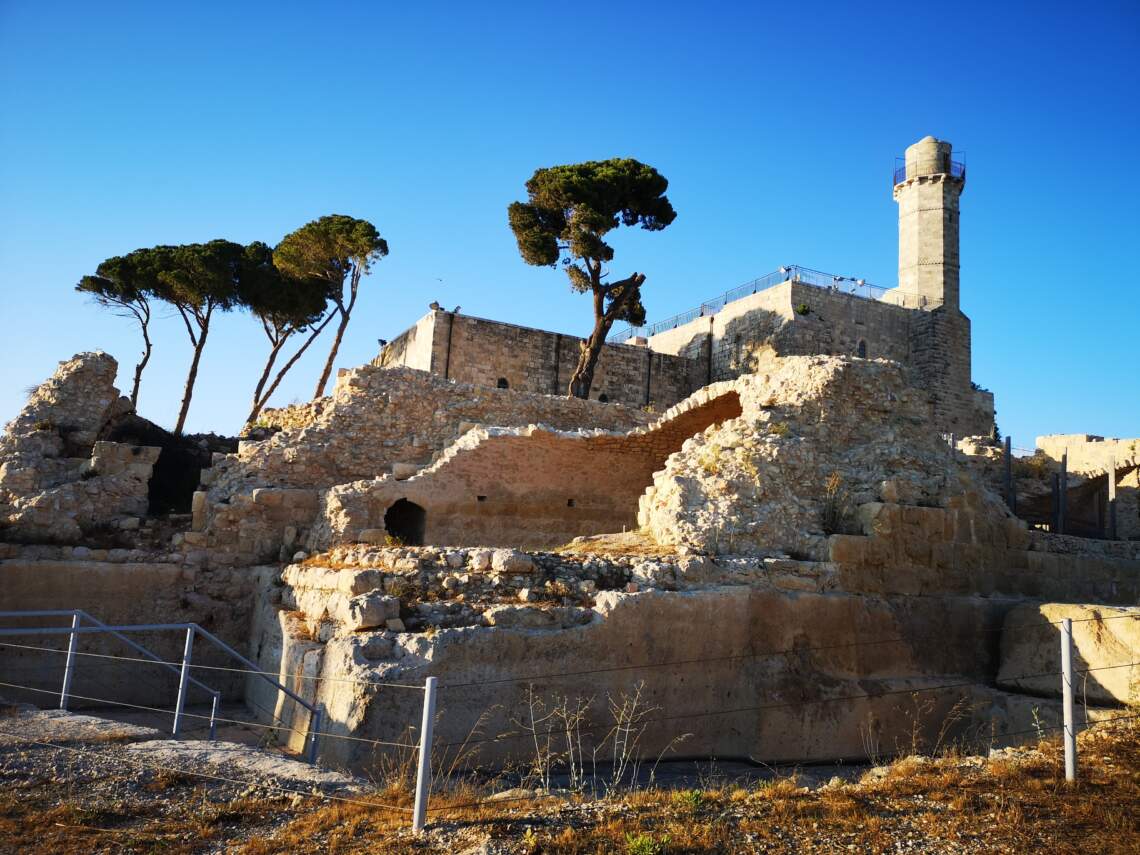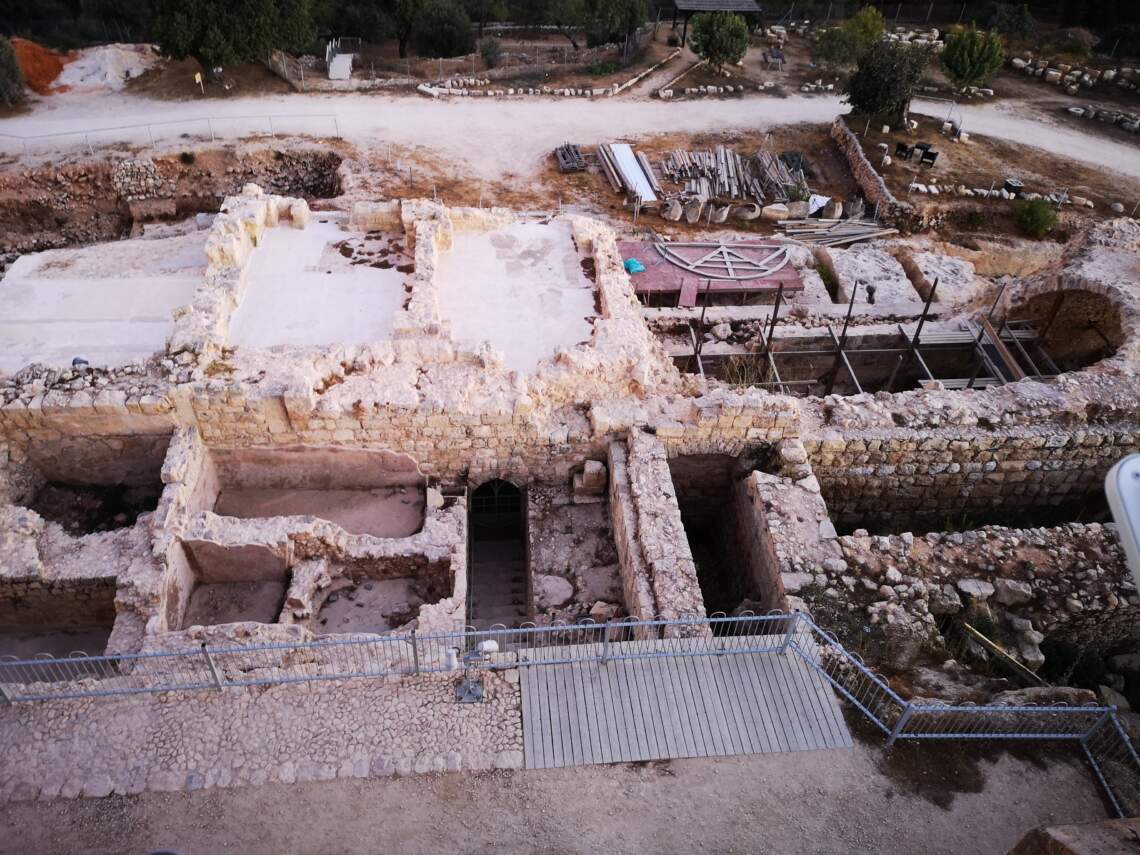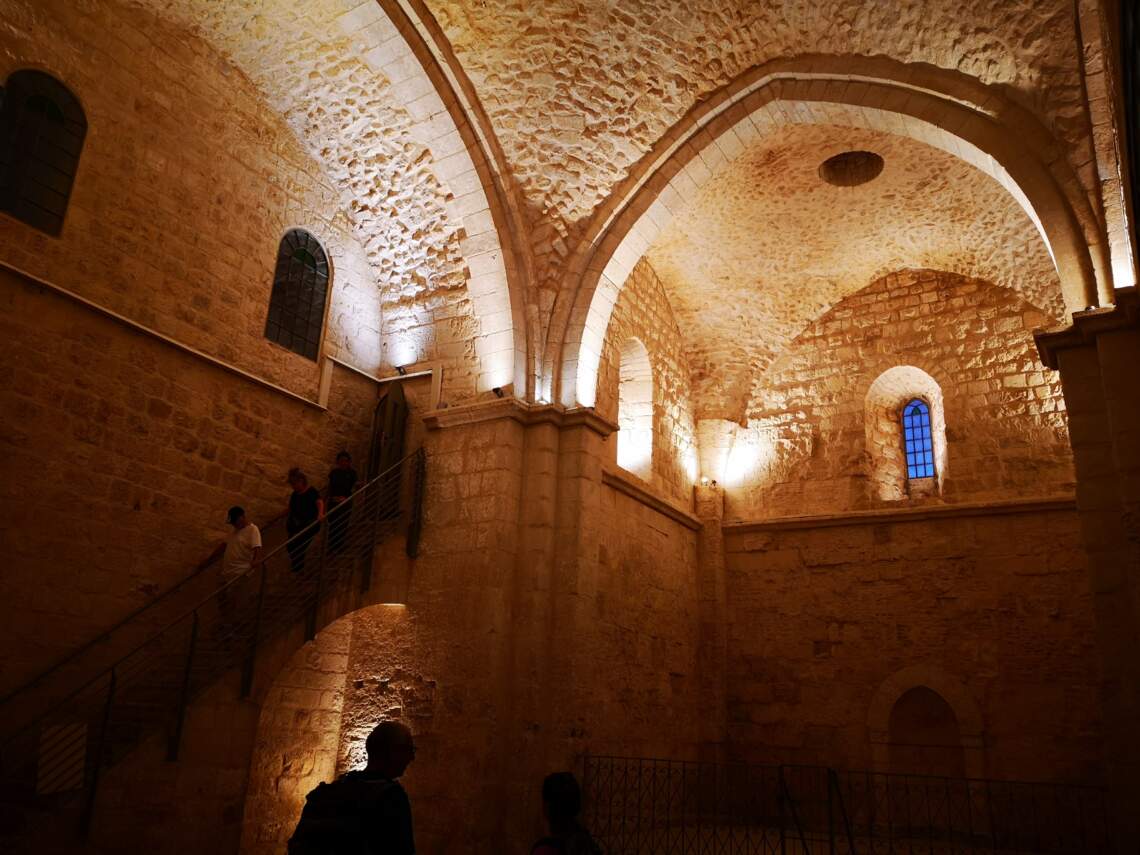A short account of the Prophet Samuel’s Tomb, given by your Israel & Jerusalem private tour guide
Close to the northern end of Jerusalem, stands the highest mountain in the area. It is 886 m. (2,900 ft.) high, and has a 360-degree view of the Judean Mountains and Jerusalem. According to an old tradition, this is the burial place of the Prophet Samuel.
What is so interesting about this place?
The site includes a late medieval mosque built on top of a Crusader fortress, which was built on top of a Jewish village, which existed at the time of the Second Temple, which was built on top of a First Temple period Israelite village. As you can imagine, there are many stories to tell, and many things to show.

click on all the photos to open them up
So, what’s the connection to the prophet?
The Prophet Samuel lived in this area during the 11th century BCE. He moved among various villages, teaching and serving as a judge to the people. He is the one who anointed the first king of the nation – King Saul from the Tribe of Benjamin. Later, he anointed David as the second king. When Samuel died, he was buried in a place named Rama. Even though Rama is identified elsewhere, tradition, which dates back as early as the 10th century CE, has determined that his burial place was here. There are also clues dating to the 5th century that a monastery in his name was here.
In the 12th century, the Crusaders built a monastery on this site, as well as a large fortress, which guarded the main road to Jerusalem. After the Muslims conquered the area and Jerusalem, a mosque was built at the center of the remains of the fortress, as the Prophet Samuel is also holy for the Muslims. Jews were allowed to pray at the crypt below the ground floor, where an impressive stone monument marks the grave.
And today?
Conquered from Jordan in 1967, Israel turned the site into a national park, which is open to Muslims and Jews, alike. They also conducted archeological excavations around it. These digs exposed the remains of the fortress, and a large area, in which the rock of the mountaintop was flattened to build stables and create training grounds for horses. On the other side, a Jewish village from the 2nd century BCE was found, having high building walls and ritual baths (mikvahs).
As you enter the old building, you can see a mosque hall, with a large tombstone for the prophet. As you enter from another side of the building, you can go downstairs into the crypt that serves as a synagogue, also with a large tombstone for Samuel.








